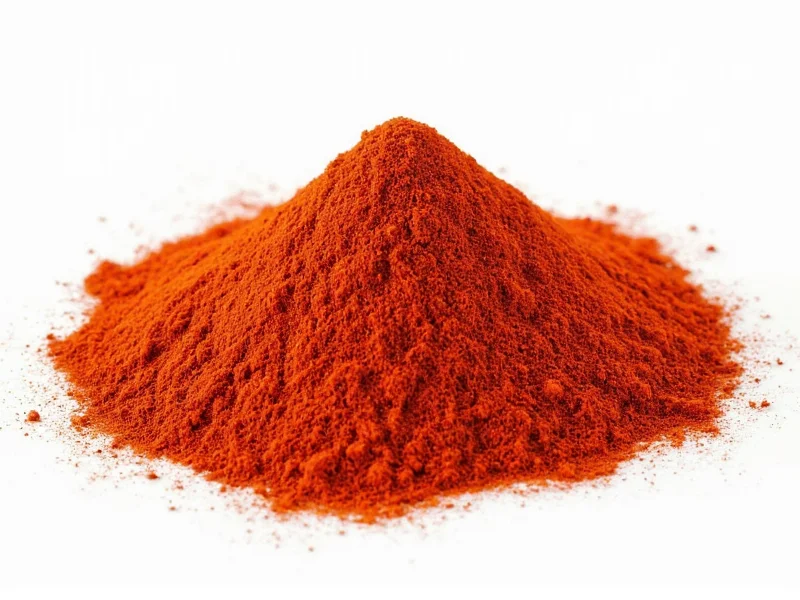When you're in the middle of cooking and realize you've run out of paprika, knowing suitable alternatives can save your recipe. Paprika, made from ground sweet or chili peppers, provides both vibrant red color and distinctive flavor ranging from sweet to smoky to hot depending on the variety. Understanding what spice is similar to paprika requires examining both flavor profile and culinary function in your dish.
Understanding Paprika Varieties First
Before selecting a substitute, recognize that paprika comes in several varieties with distinct characteristics:
- Sweet paprika - Mild, slightly sweet flavor, vibrant red color
- Smoked paprika - Adds deep smoky notes (pimentón de la vera)
- Hot paprika - Contains spicy heat elements
Your substitution choice should match the specific paprika variety called for in your recipe. Using the wrong substitute could dramatically alter your dish's intended flavor profile.
Top Paprika Substitutes Ranked by Similarity
When searching for what spice is similar to paprika, consider these alternatives in order of closest match:
| Substitute | Flavor Profile | Ratio to Replace Paprika | Best Used In |
|---|---|---|---|
| Smoked paprika | Identical to regular paprika but with smokiness | 1:1 | Chili, stews, rubs, Spanish/Mexican dishes |
| Cayenne pepper | Much hotter, less sweet | 1:4 (use 1/4 amount) | Spicy dishes needing heat, not color |
| Chipotle powder | Smoky with medium heat | 1:1.5 (use slightly less) | BBQ sauces, chili, marinades |
| Tomato powder | Sweet, earthy, no heat | 1:1 | Soups, stews, sauces needing color |
| Red pepper flakes | Spicy with variable heat | 1:2 (use half amount) | Pizza, pasta, Mediterranean dishes |
Detailed Substitute Analysis
Smoked Paprika (Pimentón)
When seeking what spice is similar to paprika specifically for smoky applications, smoked paprika is actually a variety of paprika itself. Made from peppers smoked over oak fires, it delivers that distinctive campfire flavor essential in dishes like paella, chorizo, and certain barbecue rubs. Use it as a 1:1 replacement when your recipe calls for regular paprika but you want added smokiness.
Cayenne Pepper
Cayenne makes an effective substitute when you need heat rather than color. This bright red powder packs significantly more capsaicin than even hot paprika varieties. For successful paprika substitution with cayenne, remember that 1 teaspoon of paprika equals approximately 1/4 teaspoon of cayenne. Exceeding this ratio will overwhelm your dish with heat while lacking paprika's characteristic sweetness.
Chipotle Powder
For those wondering what spice is similar to paprika with smoky heat characteristics, chipotle powder (smoked and dried jalapeños) offers the closest alternative. It provides both the smokiness of smoked paprika and moderate heat. When substituting in recipes calling for smoked paprika, use about 25% less chipotle powder to avoid excessive heat. This alternative works particularly well in southwestern and Tex-Mex cuisine.
Tomato Powder
When color matters more than flavor in your search for what spice is similar to paprika, tomato powder serves as an excellent neutral substitute. Made from dehydrated tomatoes, it provides similar vibrant red coloring without introducing heat. Use it as a 1:1 replacement in dishes like deviled eggs, potato salad, or light sauces where paprika's primary role is visual appeal rather than flavor contribution.
Red Pepper Flakes
For recipes needing both color and mild heat, crushed red pepper flakes can substitute for paprika. Unlike paprika's fine powder consistency, red pepper flakes have texture, so consider grinding them first for similar application. They work particularly well in Italian and Mediterranean dishes where paprika isn't traditional but you need a similar visual element with mild heat.
Special Considerations for Specific Recipes
Certain dishes require careful substitution consideration when you're looking for what spice is similar to paprika:
- For goulash: Use a combination of tomato paste (for color) and a pinch of cayenne (for heat) to replicate Hungarian paprika's role
- In deviled eggs: Tomato powder provides the visual appeal without altering flavor
- For rubs: Chipotle powder creates similar smokiness with added heat dimension
- In light sauces: A small amount of turmeric mixed with tomato paste gives color (use sparingly as turmeric has strong flavor)
Common Mistakes to Avoid
When substituting for paprika, home cooks often make these errors:
- Using equal amounts of cayenne instead of adjusting for heat intensity
- Substituting chili powder (which contains additional spices like cumin and oregano)
- Expecting identical results across all paprika varieties
- Adding substitutes at the wrong cooking stage (smoky elements burn easily)
Remember that the best spice similar to paprika depends entirely on your specific recipe requirements. Consider whether you need the color, the mild sweetness, the smokiness, or the heat component most, then select your substitute accordingly.
Practical Testing Approach
When experimenting with paprika alternatives, follow this method:
- Identify which aspect of paprika your recipe needs most (color, mild flavor, smokiness, or heat)
- Select one substitute from the options that matches that primary need
- Start with half the recommended substitution ratio
- Taste and adjust before adding more
- Document your results for future reference
This systematic approach ensures you'll discover the most suitable paprika replacement for your specific culinary application rather than applying generic substitution advice that might not work for your particular recipe.











 浙公网安备
33010002000092号
浙公网安备
33010002000092号 浙B2-20120091-4
浙B2-20120091-4